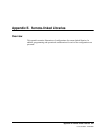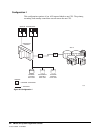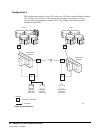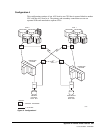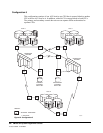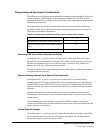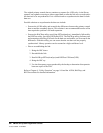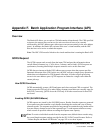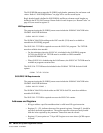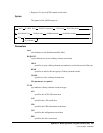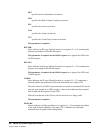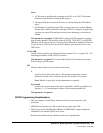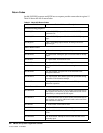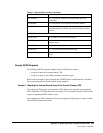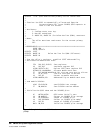
Appendix F. Batch Application Program Interface (API) 629
1st ed., 6/30/04 - 312579601
Appendix F. Batch Application Program Interface (API)
Overview
The Batch API allows you to retrieve CDS information in batch mode. The CDS specified
as input to the request does not have to be active nor does it have to be currently
referenced by the HSC address space (the request can execute entirely in the user address
space). In addition, the Batch API executes in the user’s virtual machine, and the HSC
does not have to be active to submit the request.
Note: The HSC CDS must be linked to the virtual machine that is running the Batch API.
QCDS Request
The QCDS request reads records from the input CDS and provides information about
various library elements (e.g., CAPs, drives, volumes, and so forth). QCDS requests are
synchronous, meaning that multiple requests cannot be active at the same time.
QCDS does not interact with the HSC address space except when the request specifies
automatic allocation of the CDS. In this case, the HSC executes a single query operation to
obtain data set information for CDS dynamic allocation. All other request processing
occurs in the user address space. QCDS requests are limited to a single task within the
current job step.
How QCDS Functions
QCDS automatically creates a DCB and opens and closes an input CDS as required. The
request opens the CDS only if no other library element record areas are currently open for
that CDS. Conversely, QCDS closes the CDS only if all other record areas for that CDS
are closed.
Invoking QCDS (SLSUREQ Macro)
QCDS requests are issued by the SLSUREQ macro. Results from the request are returned
in a response area that contains a reply header describing the results and a set of library
element records. The response area must be long enough to contain the reply header and at
least one library element record of the requested type. A read request transfers as many
whole records as possible without exceeding the response area capacity.
Note: To retrieve individual records from the response area, deblock those records using
the record length constant settings provided in the SLUVxDAT record formats. Refer to
“Volume Report and Batch API Records” on page 562 to see these layouts.



